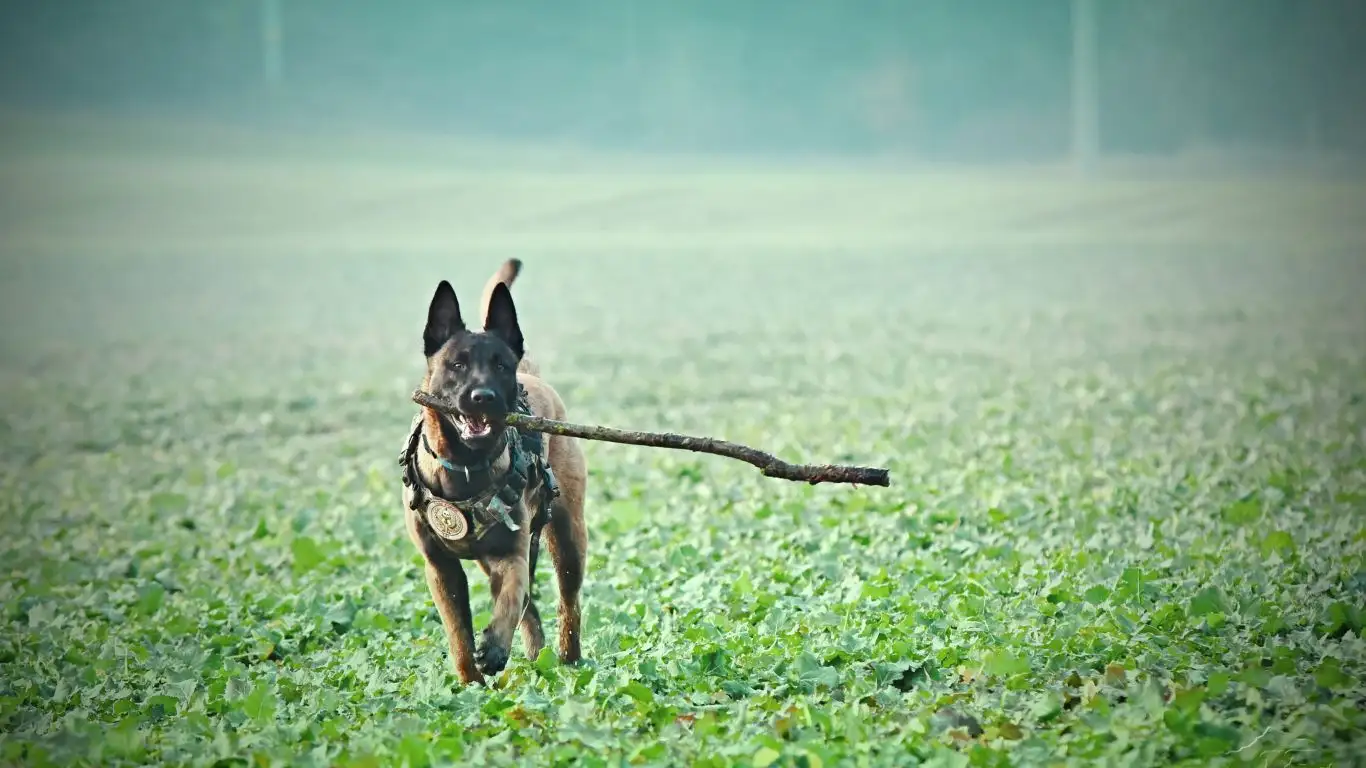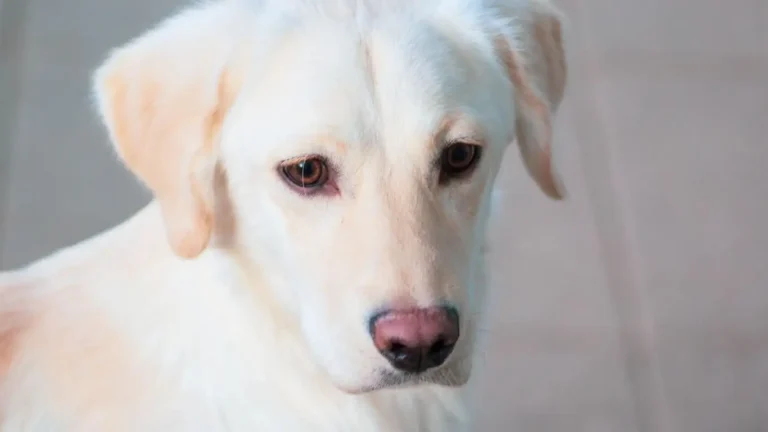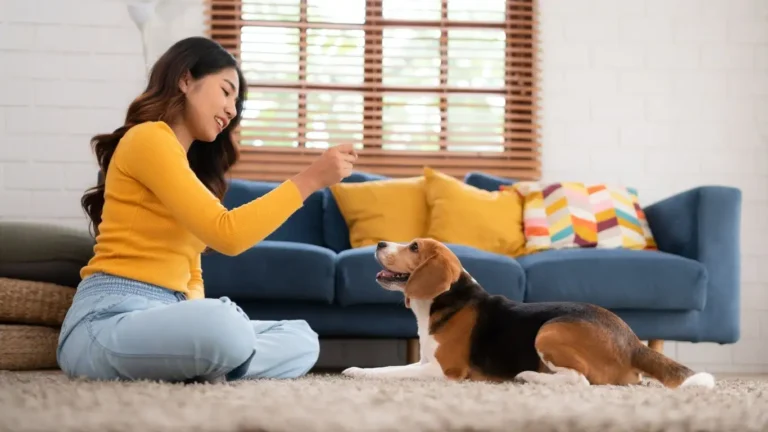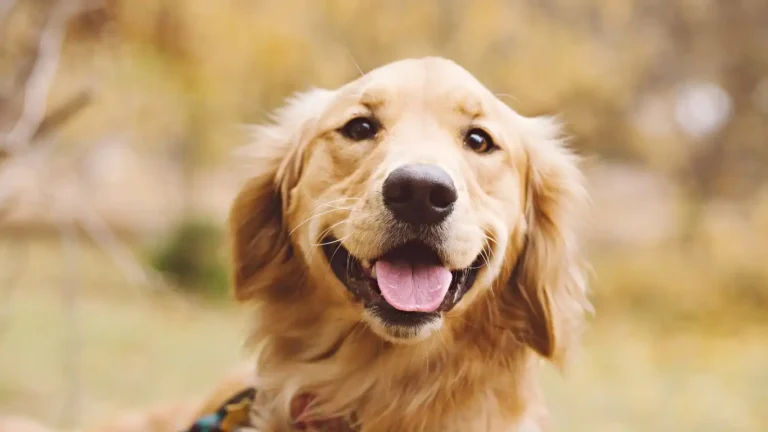Master How to Train a Dog to Be Calm When Guests Arrive in Simple Steps
Having a dog that behaves well when guests arrive can be a game-changer for many households. As a Canine-Assisted Therapy Trainer, I’ve worked with countless pet owners to help their dogs feel comfortable in social settings, especially when it comes to visitors. It’s common for dogs to become overexcited, anxious, or even defensive when new people step into their space, and that can make both you and your guests feel a bit uncomfortable. But the good news is that with some consistency, patience, and proper training, you can teach your dog to stay calm when guests arrive. So, if you’ve been wondering how to train a dog to be calm when guests arrive, you’re in the right place! Let’s dive into some of the key strategies I’ve seen work wonders over the years.
Understanding the Root of the Excitement

Before jumping into training methods, it’s essential to understand why your dog reacts the way they do when guests arrive. Dogs are highly social creatures, and many times, their excitement is simply a response to unfamiliar people entering their environment. However, their behavior can also be linked to anxiety, territorial instincts, or even the lack of clear boundaries.
For example, some dogs may get so excited that they jump on people or bark incessantly. Others might become overly protective, guarding their owners or their space. Understanding the root cause of your dog’s excitement will guide you in selecting the best approach to training. Keep in mind that each dog is unique, and factors like breed, past experiences, and socialization levels all play a role in their behavior.
Common Behaviors When Guests Arrive
- Jumping up: This is a classic behavior that many dog owners face. Your dog might see guests as a source of excitement and try to greet them by jumping up.
- Barking: Dogs often bark to alert you of someone’s presence or out of excitement to meet new people.
- Guarding or growling: Some dogs may see guests as a threat to their territory or their family, which can result in growling or even aggressive behavior.
- Clinginess or anxiety: On the flip side, some dogs get nervous when they see unfamiliar faces and may try to hide or follow their owner around.
Identifying the specific behavior your dog exhibits will allow you to tailor your training methods to address those actions specifically. But one thing remains constant – the need for clear, consistent rules and a calm environment for your dog to feel secure.
Step 1: Create a Calm Environment Before Guests Arrive

One of the first steps in teaching your dog how to stay calm when guests arrive is creating a calm environment before the guest even steps through the door. Dogs are incredibly sensitive to the energy in the home, so if you’re feeling stressed or excited, your dog will likely pick up on that and mirror it in their behavior. This is where it’s essential to remain relaxed and in control.
Preparation is key. Before the guests arrive, consider these preemptive steps:
- Exercise your dog: A long walk or a good play session will help burn off excess energy, making your dog more likely to relax when guests arrive.
- Use calming products: Products like calming collars, pheromone diffusers, or even a comfy bed with a blanket can help reduce anxiety for your dog.
- Set up boundaries: If your dog has trouble with guests in certain areas, set up barriers, like a baby gate, to limit their access to areas where they can cause chaos.
Creating this peaceful environment doesn’t just benefit your dog—it also helps set the tone for the interaction when guests do arrive. The calmer the environment, the calmer your dog will likely be.
Step 2: Teach Basic Obedience Commands
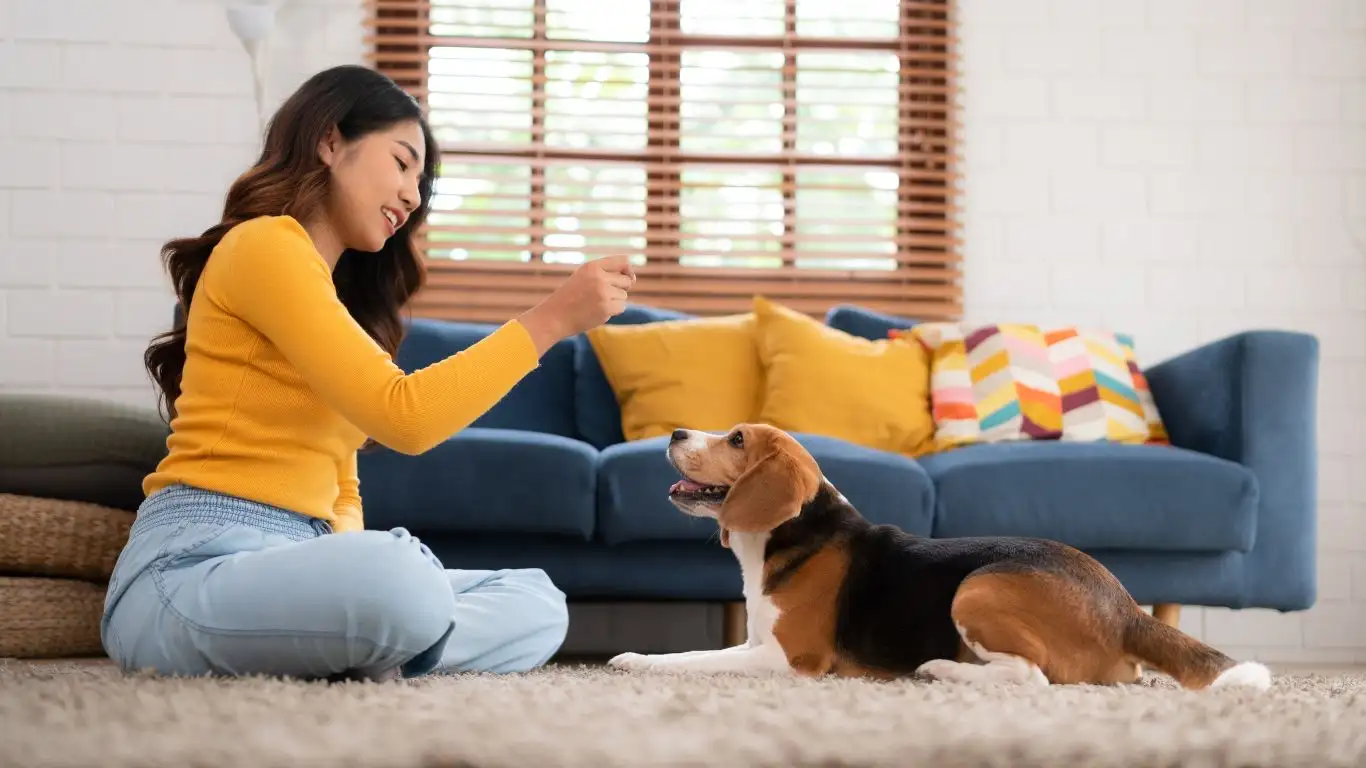
Basic obedience commands are the foundation of good behavior, and they’re especially important when it comes to social situations like greeting guests. Teaching your dog simple commands such as “sit,” “stay,” and “down” can work wonders in curbing unwanted behaviors. These commands help your dog understand that there are rules they must follow when new people come into their space.
Start with the basics: You can train your dog to stay calm by reinforcing obedience commands every time a guest arrives. This involves:
- Consistency: Always ask your dog to perform a command before allowing them to greet guests.
- Reinforcement: Use treats, praise, and positive reinforcement to reward your dog when they follow through with the desired behavior.
- Patience: Training your dog to be calm in the presence of guests takes time, so don’t expect instant results.
Keep in mind that the goal here is to teach your dog that they don’t need to jump or bark to get attention. They should learn to relax and stay in a calm state while their human friends get settled in. A well-timed “sit” or “stay” can be all they need to calm down and focus on you rather than the excitement of the new arrival.
Step 3: Use Positive Reinforcement to Reward Calm Behavior
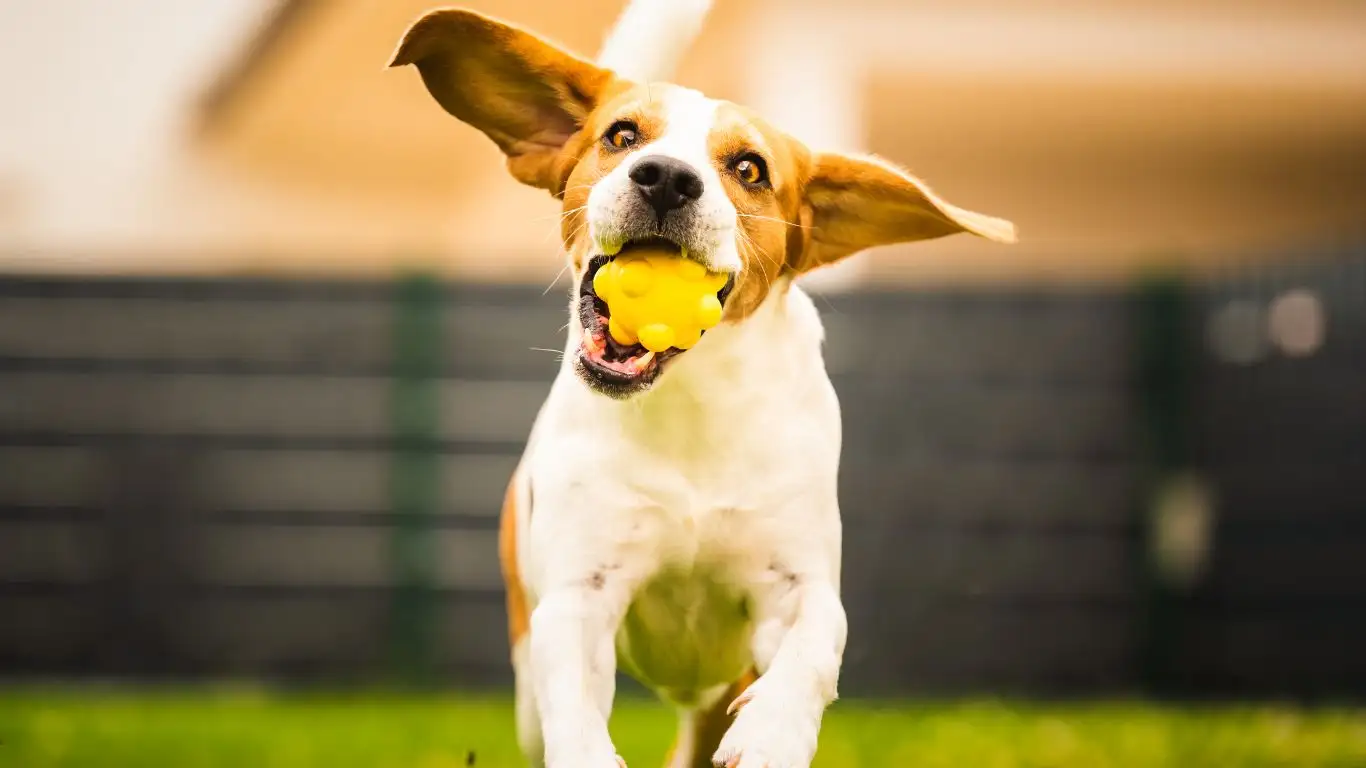
Positive reinforcement is one of the most effective training tools at your disposal. When it comes to teaching your dog to remain calm during guest visits, rewarding calm behavior is crucial. It’s essential to acknowledge and reward your dog when they behave as desired—this strengthens the behavior you want to see more of. The more you reinforce calmness, the more your dog will associate a peaceful demeanor with getting rewards.
Whenever your dog remains calm as guests arrive, you can reinforce the behavior by:
- Giving treats: A small, tasty treat can go a long way in reinforcing calm behavior. Just make sure the treat is something your dog really loves, so it acts as a real incentive.
- Offering praise: Dogs thrive on praise! A cheerful “good boy” or “good girl” lets your dog know they’re on the right track.
- Physical affection: Some dogs love to be petted or cuddled, so don’t hesitate to give them some gentle affection when they’re calm around guests.
The key here is timing. Reward your dog immediately after they show calm behavior, so they can connect the positive outcome with the action. Over time, your dog will begin to understand that staying calm leads to great things, which will help them manage their excitement during future guest visits.
Step 4: Teach ‘Place’ or ‘Go to Bed’ Command
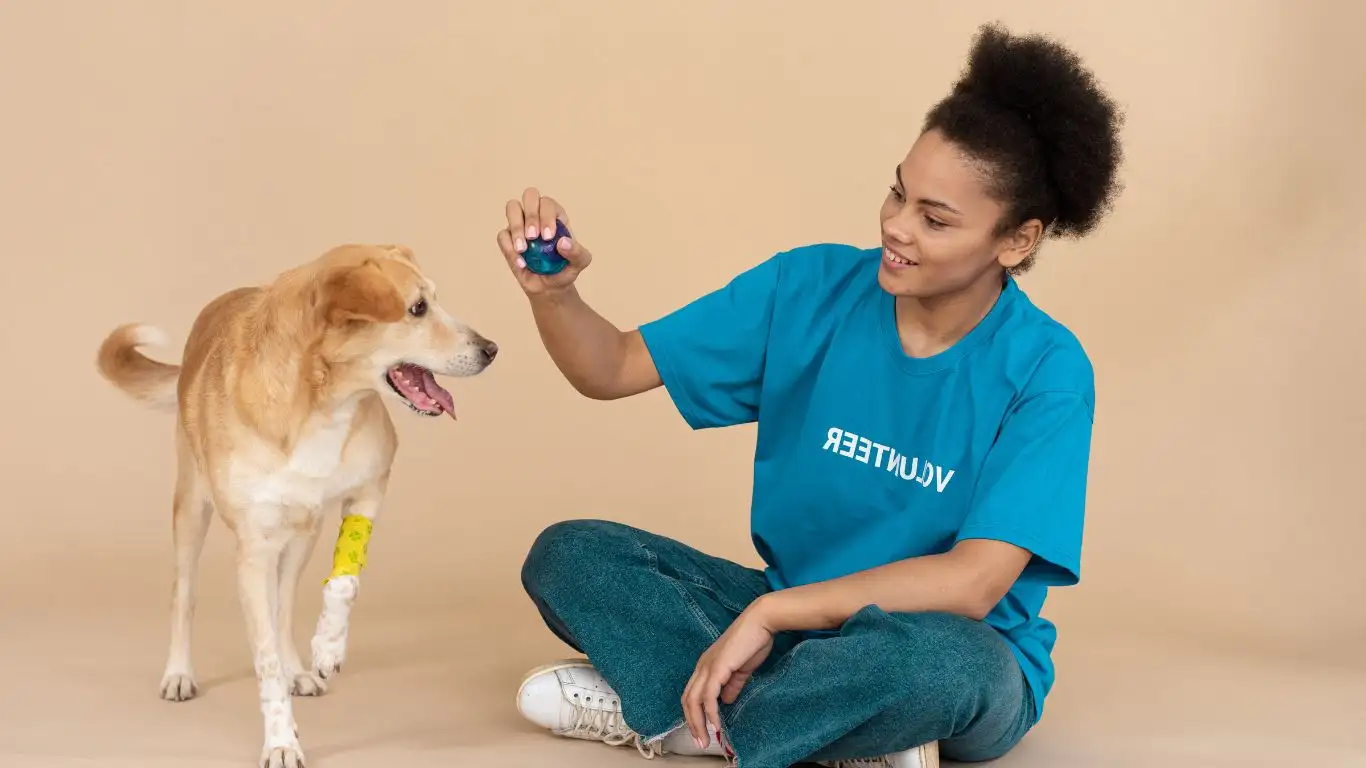
One of the best ways to manage your dog’s behavior when guests arrive is to teach them a “place” or “go to bed” command. This is especially useful for dogs who are overly excited or need boundaries. The concept behind this command is simple: you teach your dog to go to a designated area, such as a bed or mat, and stay there until released. This command helps your dog feel secure and creates a calm environment for everyone.
Here’s how to teach your dog the “place” command:
- Choose a spot: Select a mat, bed, or rug that you want your dog to go to when guests arrive.
- Introduce the place: Show your dog the mat and encourage them to step onto it. Use a treat to lure them onto the mat, and once they’re on it, say “place” or “go to bed” and reward them with praise and a treat.
- Reinforce the behavior: Once your dog is on the mat, ask them to stay. If they stay for a few seconds, reward them with more praise and treats. Gradually increase the amount of time they’re expected to remain on the mat.
- Practice with distractions: Start practicing with mild distractions (like having a family member walk by) before moving on to more challenging scenarios, such as when guests arrive.
Once your dog is comfortable with the “place” command, you can use it whenever guests come over. By directing your dog to their mat, you’re creating a clear boundary and teaching them to remain calm while still being part of the action in a controlled way. Over time, your dog will learn to associate guests with a calm, comfortable spot where they can relax.
Step 5: Gradually Increase the Challenge

Now that you’ve established some solid foundation work, it’s time to gradually increase the level of difficulty during your training sessions. If you only practice when guests arrive, your dog may not be ready for the real deal. It’s important to set your dog up for success by slowly adding more distractions and challenges to their training routine.
Here’s how to do it:
- Practice with different scenarios: Once your dog is consistently staying calm with one guest, try adding more distractions. Have friends come over, or practice during dinner time when there are more noises and movement in the house.
- Use doorbells and knocking sounds: One of the biggest triggers for dogs when guests arrive is the sound of the doorbell or a knock on the door. You can simulate these sounds to help your dog get used to them. Start by playing a recording of a doorbell or knock at a low volume, then gradually increase the volume while asking your dog to stay calm in their designated spot.
- Increase the duration: Gradually extend the amount of time your dog stays calm and in place, both with and without guests present. This builds your dog’s ability to stay focused and relaxed over longer periods of time.
The key here is to make each step manageable for your dog. Don’t rush things—if you increase the challenge too quickly, your dog might become frustrated or overwhelmed. Be patient, and always celebrate small victories along the way.
Step 6: Manage Guest Interactions
While training your dog to be calm when guests arrive is essential, it’s equally important to manage how guests interact with your dog. If your guests encourage overexcitement, like by petting your dog immediately or letting them jump up, it could set back your training progress. It’s helpful to communicate your training goals with your guests so they know what to expect.
Here are a few tips to help manage guest interactions:
- Ask guests to ignore your dog: When guests first arrive, ask them to ignore your dog until your dog is calm and in their place. This prevents them from reinforcing overly excited behavior.
- Encourage calm greetings: If your dog is calm, allow guests to greet them. However, keep the interaction brief and low-energy to avoid overstimulating your dog.
- Stay consistent: Make sure all household members and guests are on the same page when it comes to your dog’s behavior expectations. Consistency is key for reinforcing calmness.
By managing how guests interact with your dog, you’re ensuring that the calm behavior you’re working so hard to instill stays intact, even when the excitement of a new arrival occurs.
Step 7: Maintain Consistency for Long-Term Success
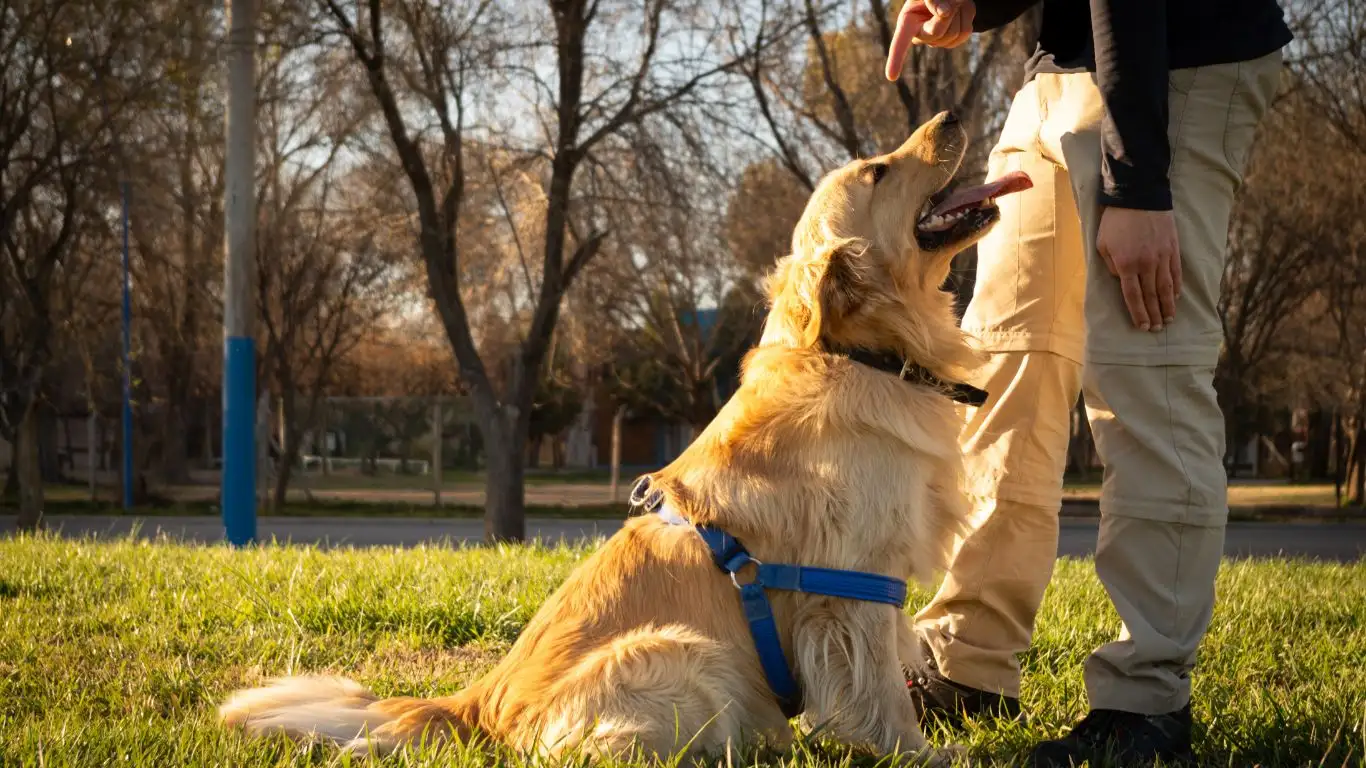
As with any behavior modification, consistency is key. It’s easy to fall into the trap of relaxing the rules when guests come over more often or when your dog seems to be doing well. But remember, consistency helps reinforce the good behaviors you’ve worked so hard to instill. This is something I emphasize regularly with my clients—training doesn’t stop after the first few successes. It’s an ongoing process.
Here are a few ways to maintain consistency:
- Set clear expectations: Make sure everyone in your household is on the same page about what your dog should be doing when guests arrive. Consistency across all interactions will help reinforce the desired behavior.
- Revisit training periodically: Even after your dog seems to have mastered staying calm, continue practicing occasionally to ensure they don’t slip back into old habits.
- Use rewards regularly: Even after your dog has become calm and well-behaved around guests, continue to reward them for good behavior. Positive reinforcement should remain a part of their routine.
Remember, dogs thrive on routines and structure, and when they know what to expect, they feel more secure and confident. If you remain consistent, your dog will eventually learn to stay calm and enjoy the presence of guests without getting overly excited.
Step 8: Addressing Setbacks and Challenges

No training process is without its setbacks, and that’s okay! As much as we’d love for every training session to go smoothly, dogs are living beings, and there will be challenges along the way. If you find that your dog is regressing or still struggles with calm behavior during guest visits, don’t get discouraged. It’s important to approach setbacks with patience and persistence.
Some common challenges you might face include:
- Reactivity to specific guests: Some dogs may be more reactive to certain individuals or types of people. If your dog is particularly anxious around men, for example, focus on desensitizing them to that specific trigger through controlled, gradual exposure.
- Distractions or overstimulation: If your dog becomes overstimulated by a lively party or group of guests, try to manage the environment more effectively. Use barriers, give your dog a break in a quiet space, or limit the number of people interacting with them at once.
- Frustration or confusion: Sometimes, dogs may become frustrated if they’re unable to get the attention they want. If this happens, reinforce the idea that calm behavior is what gets them the attention and rewards they crave.
It’s essential to troubleshoot these challenges calmly. Keep in mind that every dog is different, and certain behaviors may take more time to correct than others. You may need to adjust your approach slightly, whether that means going back to earlier training steps or addressing specific fears with positive reinforcement.
Step 9: Seek Professional Help When Necessary
If you’ve tried everything and your dog is still struggling to stay calm around guests, it might be time to seek professional help. As a Canine-Assisted Therapy Trainer, I’ve seen firsthand how beneficial it can be to work with a certified dog trainer. Sometimes, having an expert evaluate your dog’s behavior and guide you through more advanced training techniques can make a world of difference.
Professional trainers can help with a variety of issues, such as:
- Severe anxiety or fear-based behaviors: Some dogs may need more in-depth help to manage anxiety when around new people.
- Aggression: If your dog’s excitement leads to growling, snapping, or other signs of aggression, a professional trainer can provide safe and effective strategies to manage these behaviors.
- Behavior modification programs: Trainers can design a customized plan based on your dog’s specific needs, addressing the unique challenges that may arise during training.
Don’t be afraid to reach out for help if you feel you’re not getting the results you want. Sometimes, an outside perspective can make all the difference in moving forward.
Resources for Continued Learning
Training your dog to be calm around guests can be a rewarding experience for both you and your furry friend. The key is patience, consistency, and understanding that every dog learns at their own pace. If you’re looking for more resources or would like to dive deeper into dog training, there are many helpful sites that can guide you. Some of my favorites include:
- American Kennel Club (AKC) – They offer great resources on dog training and behavior management.
- Cesar’s Way – Another great place for learning about canine behavior and training methods.
- PetMD – For general advice on dog health and behavior tips.
These sites have plenty of articles, videos, and tips that can further enhance your dog’s training routine and help you troubleshoot any issues you may face.
Disclaimer
While this article provides general tips and strategies for dog training, it is important to remember that every dog is unique. If your dog has severe behavioral issues or anxiety, consider consulting with a certified professional dog trainer or veterinarian. This article is not intended as a substitute for professional advice.
